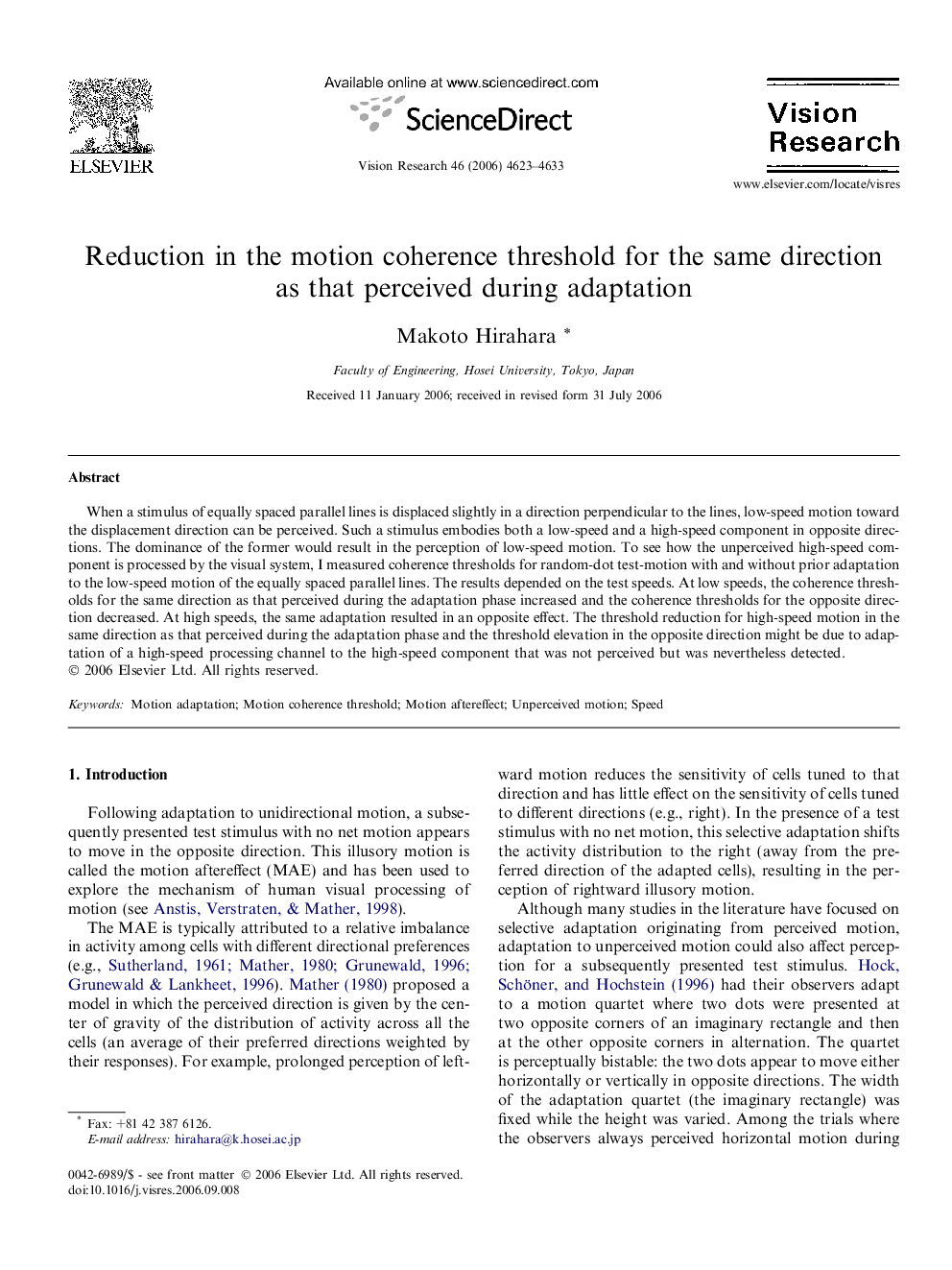| Article ID | Journal | Published Year | Pages | File Type |
|---|---|---|---|---|
| 4035868 | Vision Research | 2006 | 11 Pages |
When a stimulus of equally spaced parallel lines is displaced slightly in a direction perpendicular to the lines, low-speed motion toward the displacement direction can be perceived. Such a stimulus embodies both a low-speed and a high-speed component in opposite directions. The dominance of the former would result in the perception of low-speed motion. To see how the unperceived high-speed component is processed by the visual system, I measured coherence thresholds for random-dot test-motion with and without prior adaptation to the low-speed motion of the equally spaced parallel lines. The results depended on the test speeds. At low speeds, the coherence thresholds for the same direction as that perceived during the adaptation phase increased and the coherence thresholds for the opposite direction decreased. At high speeds, the same adaptation resulted in an opposite effect. The threshold reduction for high-speed motion in the same direction as that perceived during the adaptation phase and the threshold elevation in the opposite direction might be due to adaptation of a high-speed processing channel to the high-speed component that was not perceived but was nevertheless detected.
